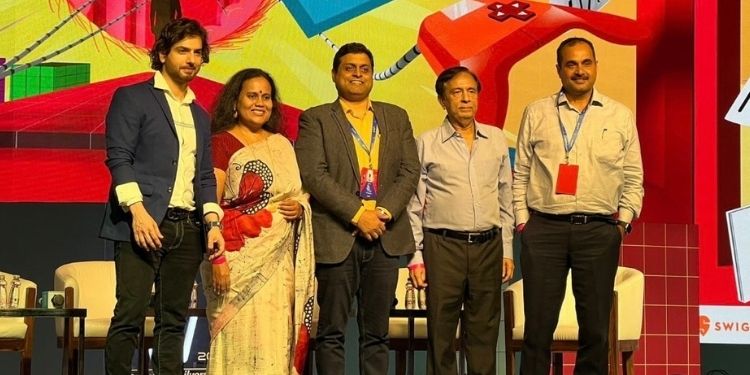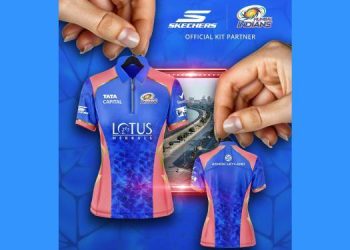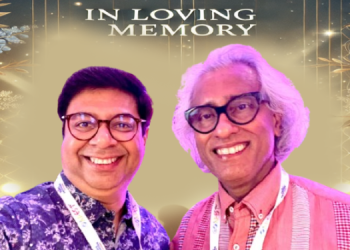Marketing to a rural audience is a different ball game. And given the size of the rural market in India, it is not something marketers can ignore.
The sixth edition of GroupM’s Brew in Mumbai on October 16, 2023 focused on this segment with a session titled ‘Winning Strategies for Rural India by GroupM X Kantar: A Rural Tech Report Launch’.
The conversation featured Sanchita Ganguly, Transformation Catalyst Lead – APAC, Bayer; Puneet Avasthi, Senior Executive Director, Kantar; Chandan Kumar, Joint President – Marketing, Ultratech; Swadesh Chaddha, Founder, Mobilewani; and Prabhakar Tiwari, Chief Growth Officer, Angel One. The discussion was moderated by Niraj Ruparel, Lead, Emerging Technologies, WPP.
Opening the conversation on solutions marketers are building, Avasthi noted, “There is a lot of belief about what could probably be working in rural areas; (sic) in a lot of areas things are guided by our own presumptions. This (Groupm-Kantar report) is a research that busts a lot of presumptions about how best to communicate with rural India, given the infrastructure that is available to them and given their context as such. There are very meaningful insights that we are kind of deriving, from the standpoint of reaching out to rural India, using technology that is available.”
Avasthi noted that there is a reality of rural India where budgets are constrained and the fact that data is expensive. These are among factors that combine to create a different ecosystem particularly in the media dark parts of the country which is home to about 38 pc of India’s population, noted the speaker, underlining the need to understand the relevant codes of communication for consumers there.
Ganguly added, “As growing India and Make in India, we are making a lot of noise about digital in rural areas but there is a reality of bandwidth. There is a reality that rural people prefer to spend their time more for entertainment rather than education. I truly believe the platform comes second, first is content and insight on why a certain farmer would use it and why he won’t use it.”
The content follows that insight, noted the speaker.
Go-to market (GTM) strategy for rural
“We could clearly see that there is a need for a customised GTM for rural, fundamentally because the consumers are different from urban. Rural is marked by higher salience of lower NCCS households. Media penetration and landscape are also very different. If I have to speak about our core markets, which are in the heartland of India (UP and Bihar), the TV penetration in rural areas would be less than 30 pc. However, the bright spot is that mobile penetration is close to 80 to 90 pc. Therefore, it has become a very effective medium to reach our audience in rural,” explained Kumar.
He added, “I think over the years we have identified key levers which are driving the effectiveness or rather which can drive effectiveness for any voice-based communication. One is obviously that you have to contextualise your proposition and for that you really need to understand your audience well, their motivation, their desire. A lot of data is available as far as demographics are concerned but marketers need to look beyond demographics to understand how their audience is framing their identity, in any category. Second piece is engage with them in their language, especially dialect, because that makes the conversation even more casual and inviting.”
Delving into the importance of language and dialects, Chaddha recalled an LIC campaign.
“It all started with the brand’s line ‘LIC ka ho saath, toh fikr ki chodo baat’. We thought of creating an iconic character that we named Jeevan because it resonates with LIC. The programme was done in 18 languages and five dialects. This was the first time a client covered the NorthEast as well. We did not translate languages but trans-created them. Sonic characters play a big part as people identify with them,” underlined Chaddha.
Tiwari observed, “Rural India is not a monolith. It is a lot more dispersed than urban because urban India tends to be a melting pot where we are bringing in cultures that are at times fairly similar, people who are kind of reasonably similar. But when we are looking at rural India, the language and the dialect changes every few kilometres. The population construct in terms of affluence profile changes.”
A marketer needs to understand the audience well in terms of the medium available to them, the context that works best for them and communicate to them in a language that is simple to them but deliver meaning, he emphasised.
“If you don’t deliver meaning to them, it is very difficult for them to stay engaged with communication because they are looking at video and other forms of entertainment are available. India has a fairly evolved culture of entertainment in that sense, but this set requires a conversational method of giving them information, delivering it well and delivering it in a manner where there is something new for them. Then I think the impact will be there,” he added.
Rural Future
Rounding up the conversation, the panel zoomed in on the future.
“Marketers need to build an influential (rural) marketing ecosystem. That’s what we are working on right now. We are in the process of scaling up a new disruptive influencer marketing campaign and a model using voice tech in conjunction with print. That is the next big thing that we are working on,” said Ultratech’s Kumar.
Ganguly noted, “We need to look into a 360 kind of approach – including Google, voice and TV and everything else – on how to influence this very important TG for us. It will also change from state to state, from crop to crop, from pest to pest. It’s a very complicated matrix and for that to happen, we need to realise the basic insight difference. The next thing we are working on is actually figuring out the attitude buckets of these farmers rather than getting bogged down by numbers. And then, obviously, based on medium penetration, we plan for the best way to reach them.”
Also Read:
GroupM Brew: Brands, creators and consumers can actually create together enabled by AI
Feedback: [email protected]

















